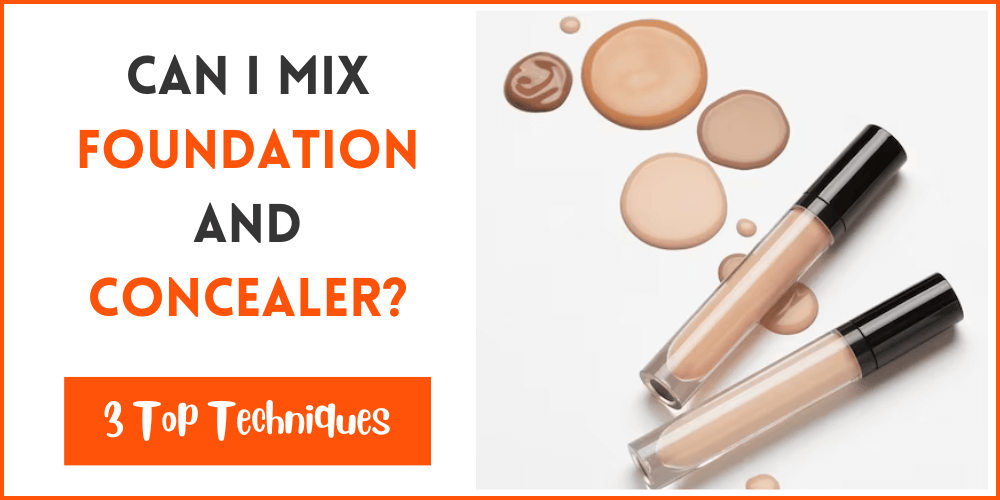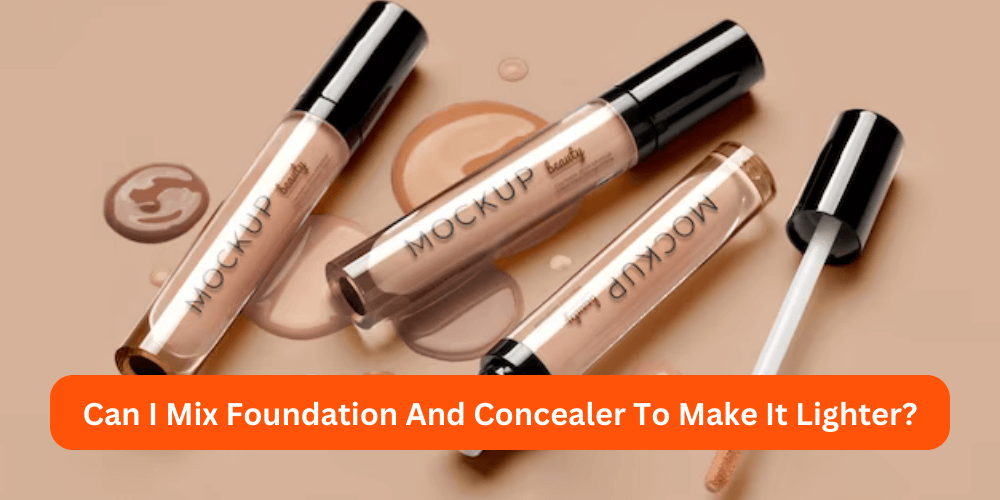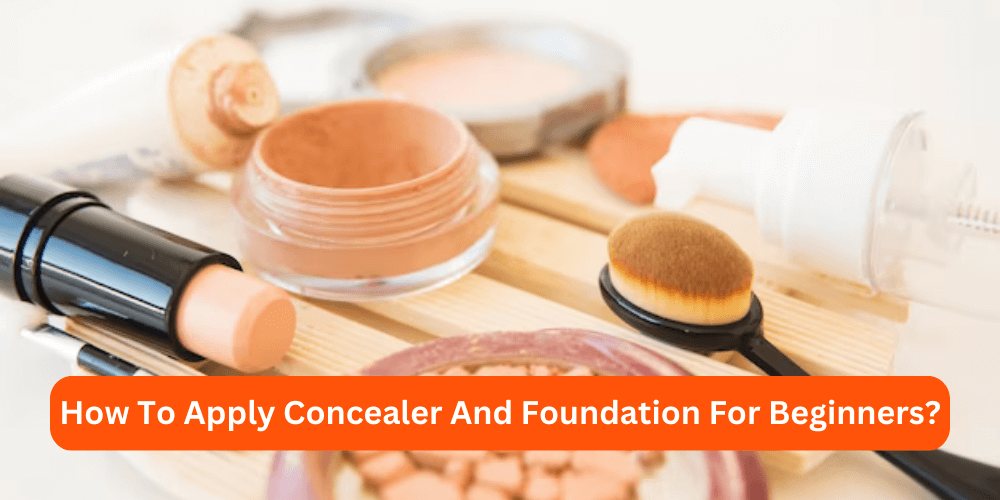

When it comes to makeup, there are endless possibilities for customization and experimentation. One common question that many makeup beginners and enthusiasts ask is whether or not can I mix foundation and concealer. In this article, we will delve into the topic of mixing foundation and concealer, discussing its benefits, drawbacks, techniques, and tips for achieving a flawless finish.
Can I Mix Foundation And Concealer?
Yes, you can mix foundation and concealer. This technique can be beneficial for achieving a tailored skin tone match or for creating a more full-coverage base. However, it’s important to consider the formulas you’re combining. Ideally, both products should have the same base – either water, oil, or silicone.
Before we dive into the details, let’s first clarify what foundation and concealer are. The foundation is a base makeup product that is used to even out skin tone and create a smooth canvas for the rest of your makeup. It comes in various forms such as liquid, cream, powder, and sticks, and is available in a wide range of shades to suit different skin tones.
Now, back to the main question – can I mix foundation and concealer? The answer may surprise you – yes, you can definitely mix the two products! Mixing the two products can serve multiple purposes and provide various benefits.
The Benefits And Drawbacks Of Mixing
One of the main benefits of mixing foundation and concealer is that it allows for better customization of your makeup. Sometimes, the foundation shade may not be a perfect match for your skin tone, and mixing it with concealer can help adjust the color. This is especially useful if you have trouble finding a foundation that matches your undertones or if you have a hard time finding concealer shades that match your skin tone.
However, it’s important to note that there are also drawbacks to mixing foundation and concealer. One of the main concerns is that it may alter the formula of both products. This could affect the longevity and performance of your makeup, causing it to break down or look patchy throughout the day. Additionally, mixing products may also increase the risk of clogging pores and causing breakouts.
Importance of Matching Undertones
Striking the right balance in shade between foundation and concealer is crucial. To avoid a makeup faux pas, it’s imperative to understand your skin’s undertone—be it cool, warm, or neutral. Mixed incorrectly, even the highest quality products can result in a mismatched appearance.
Testing on the Jawline
The jawline is the sweet spot for testing shades. It’s where your face and neck meet, and getting a match here ensures consistency across both areas. Always test makeup in natural light for the most accurate depiction of how it will look once you step outside.
Consideration for Different Areas of the Face
Remember that different areas of your face may have varying tones and colors. While your concealer should be slightly lighter than your foundation to brighten the under-eye area, mixing them should not stray far from your natural skin color.
Techniques For Mixing
There are several techniques you can use to mix foundation and concealer, depending on the coverage and finish you desire. Here are some common methods:
- Mix on the back of your hand: This is the most popular method used by makeup artists. Simply squeeze out a small amount of foundation and a small amount of concealer onto the back of your hand and mix them with a brush or sponge. This allows for better control over the ratio and consistency of the products.
- Mix on a palette: If you prefer a more professional approach, you can mix foundation and concealer on a makeup palette. This method is ideal for creating larger batches of custom shades or if you are mixing products from different brands.
- Layering method: For a more targeted approach, you can first apply your foundation and then dot concealer on areas that need extra coverage. Then, blend the two with a brush or sponge for a seamless finish.
When To Mix Vs. When Not To Mix
Although mixing foundation and concealer can provide great benefits, there are also times when it’s best not to mix the two products. For instance, if you have a high-coverage foundation and a high-coverage concealer, mixing them together can result in an overly heavy and cakey look. In this case, it’s better to use the concealer on its own for targeted coverage.
Similarly, if you are using a tinted moisturizer or BB cream as your base, it’s not necessary to mix in a concealer. These products are meant to provide light coverage and mixing in a concealer may make them too heavy.
Application Tips For A Flawless Finish
To ensure a flawless finish when mixing foundation and concealer, here are some helpful tips:
- Start with small amounts of both products and gradually add more if needed.
- Use a clean brush or sponge to mix the products for better blending.
- Blend the mixture onto your skin using a dabbing motion, rather than rubbing or swiping.
- Pay extra attention to thoroughly blending along the jawline and hairline to avoid any harsh lines between the two products.
What Happened When I Tried Foundation And Concealer?
In my experiment, I mixed my foundation and concealer and noticed an interesting transformation. The combination created a more uniform, seamless color that was surprisingly closer to my skin tone. The texture was a bit thicker, giving fuller coverage, which worked wonders for my blemishes and dark circles. However, I had to work swiftly as the mixture dried a bit faster.
For those with dry skin, I recommend incorporating a hydrating primer or a drop of aloe vera to prevent it from becoming overly matte. In conclusion, mixing foundation with concealer can be a game-changer, provided you take your skin type and tones into consideration.
Related Guides:
Can I Mix Foundation And Concealer To Make It Lighter?


The answer is yes, you can!
Some people also wonder if they can mix foundation and concealer to make it lighter. This technique is commonly used to create a custom shade that matches your skin tone better. However, it’s important to note that this may affect the coverage and finish of the products.
How To Apply Concealer And Foundation For Beginners?


If you’re new to makeup and wondering how to properly apply concealer and foundation, here are some beginner-friendly tips:
- Start with a moisturized and primed face to ensure a smooth base for your makeup.
- Use a small amount of product at first, as a little goes a long way. You can always add more for additional coverage.
- For foundation, start in the center of your face and blend outwards using tapping or dabbing motions.
- For concealer, dot the product onto areas that need extra coverage, such as under the eyes or on blemishes. Then, gently blend with a brush or sponge.
- Set your makeup with a light dusting of translucent powder to help it last longer throughout the day.
Which Is Better Concealer Or Foundation?
There’s no clear answer to this question, as both products serve different purposes. Foundation provides overall coverage for the entire face, while concealer is more targeted and used to cover specific areas such as blemishes or dark circles.
Conclusion
Mixing foundation and concealer can provide many benefits, from achieving a perfect color match to enhancing the coverage and finish of your makeup. However, it’s important to choose compatible products and use appropriate techniques for the best results.
With these tips and considerations in mind, you can confidently mix foundation and concealer for a flawless and customized look. So, go ahead and experiment with different products and techniques to find what works best for you.
Remember, makeup is all about having fun and expressing yourself, so don’t be afraid to mix things up!
References
- By ALANNA MARTINE KILKEARY, What Comes First — Foundation or Concealer?
- FOUNDATION VS. CONCEALER
- By Hana Hong, Ask a Beauty Editor: Should You Apply Concealer or Foundation First?
- By Alexis Gaskin, Do You Apply Concealer or Foundation First? Posted on AUGUST 16, 2023



